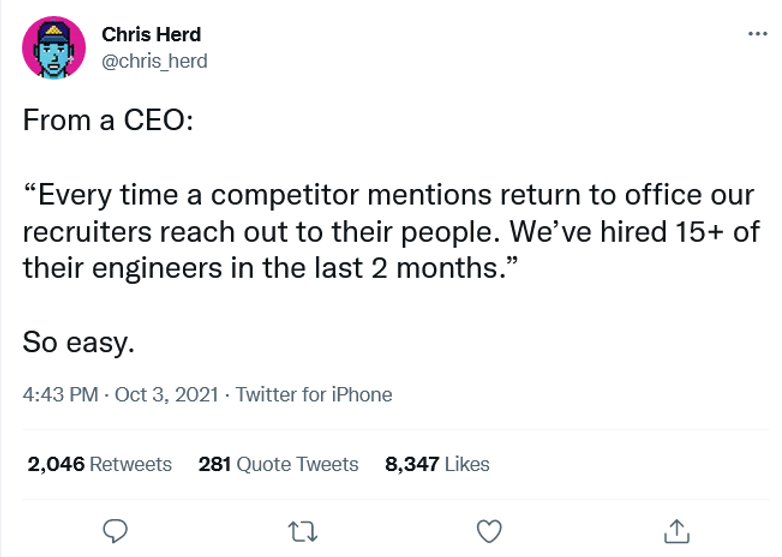
We (JobSync) had Dr. Solange Charas on one of our roundtables last year (if you don’t know about those, check them out, it’s worth your time). There is a specific line at minute 28:38, in which she says ‘recruiting is the most inefficient process at organizations’.
Wow. The MOST inefficient process at organizations.
Two things that really stand out about that:
She’s right, we do a lot of work to sell a single job to a single person.
She’s wrong, there is one more process that is even MORE inefficient, that we choose to ignore.
She’s not actually wrong, but the most inefficient process is one that happens before the lines of the organization start, so as businesses we ignore it. The daily commute. And this matters for recruiting.
What an epic waste of time. Not for companies (although we will get to that in a minute), for employees. Before the pandemic, the average US employee spent 72 minutes a day on their commute. 6 hours a week. Nearly a full day of work. But this data looks across all jobs. And the reality is that about ⅔s of US jobs require onsite presence – not because of a rule, but because they are either customer-facing (restaurant, retail, hospital/healthcare, construction), part of the supply chain (warehouses, driver, manufacturing), or must interact with some sort of machinery/access to databases (laboratories, testing facilities, government).
And a majority of those jobs are hourly positions, 58.1% of all US jobs are hourly. The pandemic created a pause in time to look at this data and remove the ⅓ of jobs that don’t need to commute, and that caused the commute time to drop to 47 minutes. A 47% drop in time spent in a car, a bus, or a subway. Sure, there are a lot of nuances to this, fewer cars = less time on the road, so it’s not a perfect representation of the situation, but all things considered, you can postulate that part of the decrease is that higher-paid workers were willing to commute further, and then they didn’t.
Why is recruiting the most inefficient of business processes?
If we are thinking about efficiency holistically, we must consider the efficiency of our workers and our processes. Technology can automate manual processes, and for decades we have seen companies adopting technology to eliminate cumbersome, time-consuming tasks. The only innovations to the daily commute have been cell phones and wifi on subway trains.
The pandemic brought us innovations in the daily commute (just eliminate it) and returned 9 billion hours back to our employees in just the first 7 months of the pandemic.
So what does that have to do with my topic, inefficiency in recruiting?
Well, if you are hiring for one of the ⅓ of US jobs that can be remote – make sure it’s remote.
And then do what this guy does:

Target your competitors who haven’t figured out that employees don’t want to be forced back into the office – in fact, companies are three times more likely to make employees return to the office than employees who want to – that’s fertile ground for recruiting.
Instead of advertising and hoping – get surgical with your targeting. Watch for news and tweets about your target companies you would like employees from (and if you have some folks who used to work at those companies, ask them to keep their ears and eyes open), and pull top performers before they make it onto the market. And while you are at it, make your recruiting process as clean as possible, never forget, sometimes the people you are recruiting, are recruiters.
Happy Sourcing!

